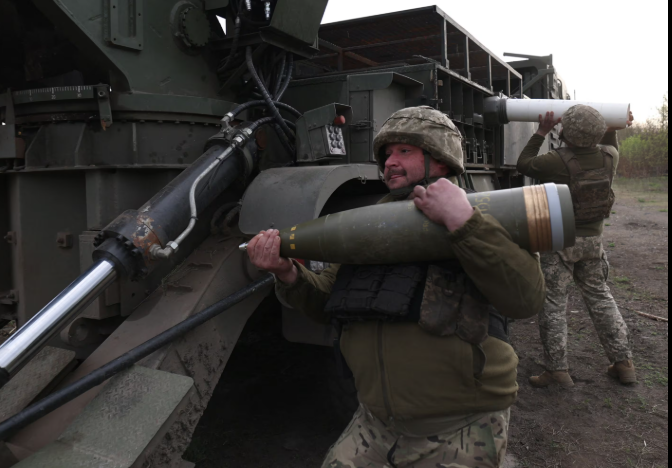Denmark to Spend Over €830 Million on Ukraine-Made Weapons in 2025
In a major step to support Ukraine, Denmark will buy weapons and ammunition made in Ukraine. The total amount Denmark plans to spend is around 830 million euros, which is about $934 million in U.S. dollars. This will happen in 2025.
This money will come from Russian assets that were frozen by European countries. These frozen assets are from Russian banks and government sources, and were locked after Russia invaded Ukraine. Instead of letting these funds sit unused, Denmark and the European Union (EU) have decided to put them to work. The money will be spent through the European Peace Facility, which is the EU’s special fund for defense-related projects.
What makes this decision different is that Denmark is not just sending money or weapons to Ukraine. It will actually buy weapons directly from Ukrainian companies. This means Ukrainian factories and workers will get the money, helping their own defense industry grow stronger. It also means the weapons will be made by Ukrainians, for Ukrainians, in their own country.
The Danish Model: Supporting Ukraine from Within
Denmark started doing this in 2024. That year, it spent about 400 million euros to buy weapons from Ukrainian companies. That amount came from Russian assets as well. With help from other EU countries and partners, Denmark raised a total of about 4.4 billion Danish kroner—around $663 million—for this purpose in 2024.
One of the biggest purchases in 2024 was 18 Bohdana self-propelled howitzers. These are large mobile guns that can shoot long distances. Buying such equipment from Ukraine not only gives the army what it needs but also boosts the factories making them.
Because of this early support, Denmark’s system of helping Ukraine became known as the “Danish Model.” It means helping Ukraine not just by giving aid, but by investing directly in Ukraine’s defense factories. This model also allows Denmark to deliver equipment faster, since the weapons are made in Ukraine and don’t need to be shipped from faraway countries.
The EU has seen the success of this model and has now given Denmark even more funds to continue this work. In 2025, Denmark will again take the lead. It will handle the procurement process on behalf of the EU, making sure the money goes to Ukrainian factories for the weapons needed by Ukrainian soldiers.
Helping Soldiers With Familiar Equipment
One of the key benefits of this approach is that the Ukrainian soldiers get equipment they already know how to use. Since these weapons are made in their own country, the soldiers are trained to handle them. They can also repair them easily, using local parts and tools.
This gives a big advantage in the middle of a war. Instead of learning to use foreign weapons or waiting for spare parts from other countries, the Ukrainian army can quickly use and maintain the gear it receives.
Another benefit is logistics. When weapons are made locally, they don’t need to be transported across many countries. This saves time and money. It also avoids delays at borders or in customs checks. The equipment can be sent directly to the front lines from the factory.
Denmark’s decision also helps Ukraine’s economy. It keeps Ukrainian factories open, provides jobs to workers, and builds skills in the defense sector. The money spent is not only helping with the war effort but also keeping parts of the economy running.
From 2025 to 2027, Denmark has already set aside 3 billion Danish kroner (around $452 million) for buying weapons from Ukraine. That’s in addition to the 830 million euros planned for 2025 alone. This shows Denmark’s strong commitment to supporting Ukraine in a way that is smart, fast, and focused on long-term impact.
All of this is happening through the European Peace Facility, using money that once belonged to Russia but is now frozen. Instead of letting that money stay unused, the EU and Denmark are putting it to work for Ukraine’s defense. This marks a major shift in how military support can be provided during conflict—by strengthening the country’s own industry and meeting urgent needs at the same time.

